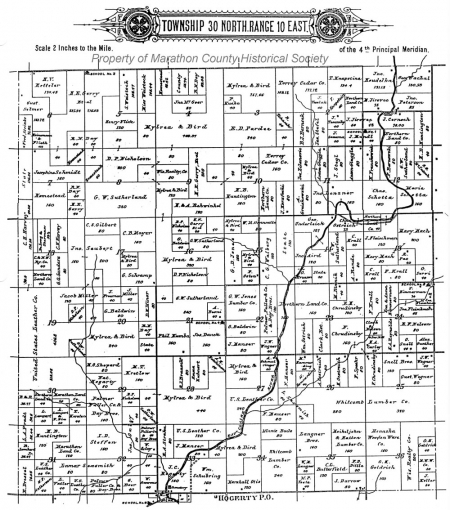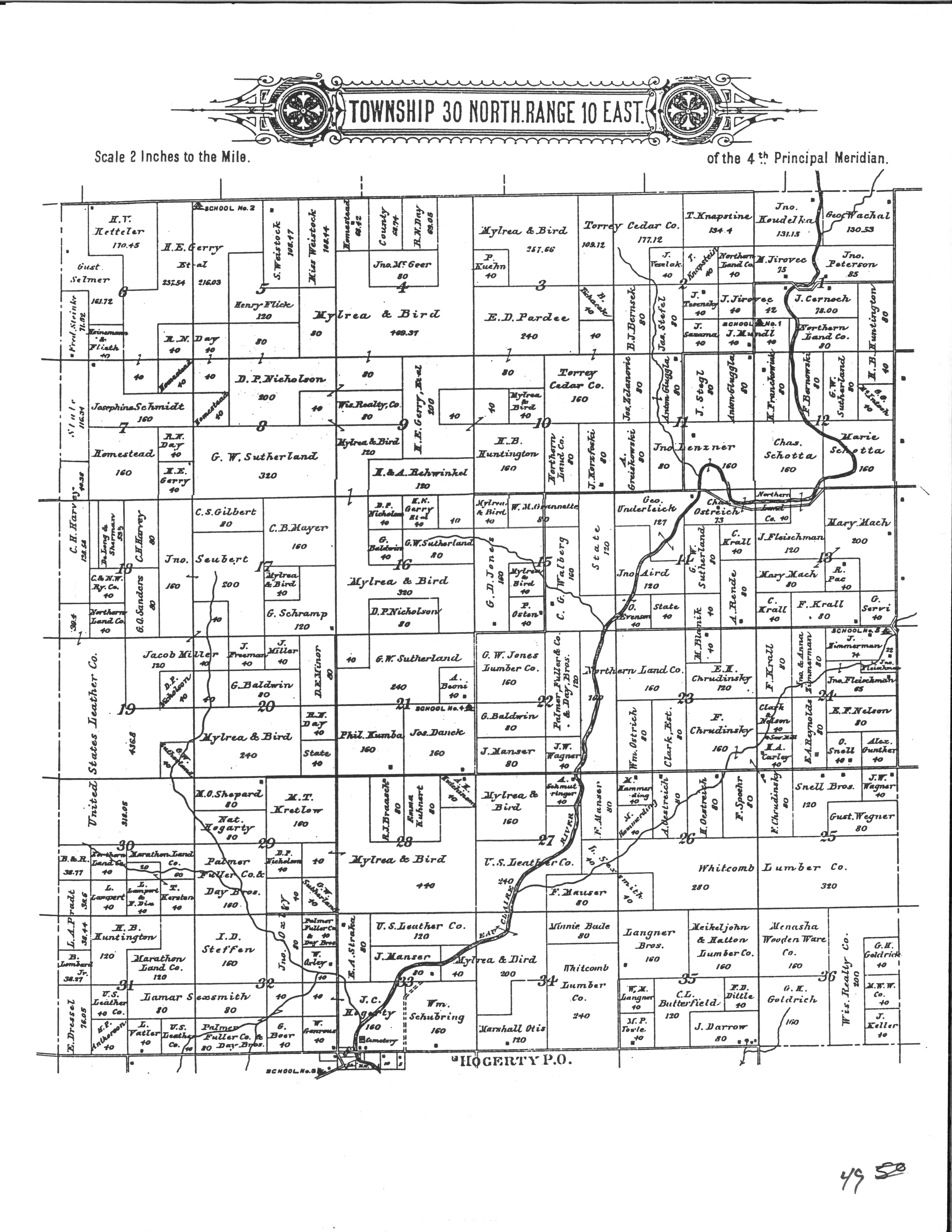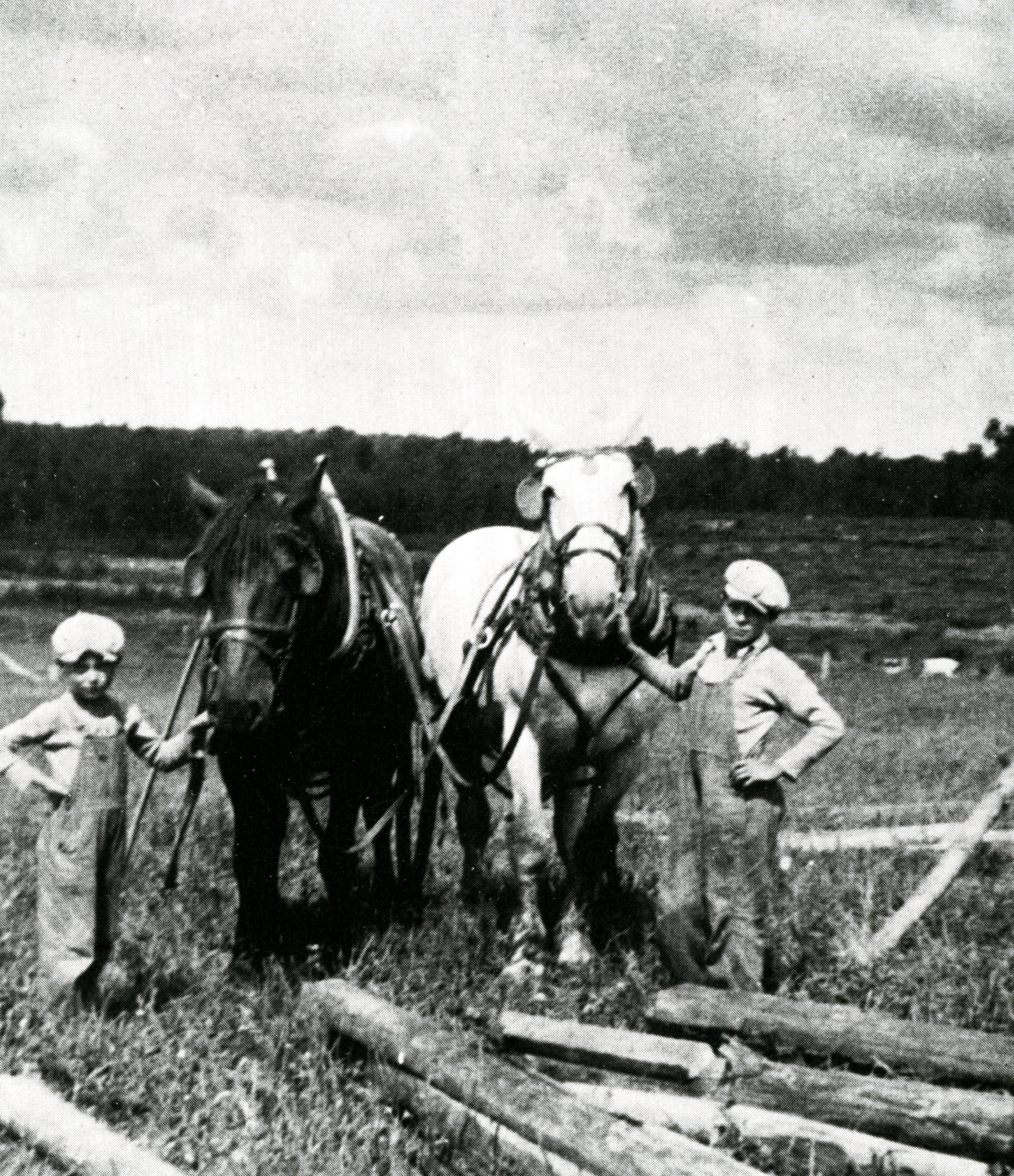Search our Places Database
Harrison, Township of
Return To List of Locations | Back to Search
For more information on this location, please contact our research library.

Author:
Mary Moltzan
Location:
T. 30 N. - R. 10 E.
Formallized:
December 20, 1888
Background:
Population: 1905-313, 2000-435
Harrison was set off as a separate town from portions of Easton and Texas. The name Harrison was chosen because President Harrison was about to be sworn in as President of the United States in January, 1889. It was organized by one of the first settlers who came to the area, John Crump Hogarty.
Before settlers arrived, the area was mostly occupied by Native Americans. The main occupation of the new settlers was logging.
First Public Official:
John C. Hogarty
Biography:
John C. Hogarty, born in Richmond, VA, 1825, came to Marathon County between 1842-44 having the purpose of trading with the Native Americans. He became a logger, trader, merchant and farmer. He took over the claim of the first settler, J. D. Dodge, and acquired more land, as upon returning from Civil War service, he was alloted the additional 160 acres given to all returning soldiers. Through time he acquired more timber land.
John married twice (both Native American women, the first having died an untimely death) and spoke their language fluently.
According to one source, he died on February 14, 1904 at the age of 78 and is buried in the Hogarty Cemetery alongside a black cherry tree he planted in 1904 before his death. Near his grave are a number of "unknown" marked graves which are believed to belong to his children from his two Native American wives.
Post Office Established:
June 24, 1881
First Postmaster:
John C. Hogarty
About The Post Office:
The Hogarty P. O. was first located in NE 1/4 Section 4Â but moved prior to 1901 to SW 1/4 Section 33. Service was discontinued on May 15, 1913 with service from Aniwa in Shawano County.
Snell P. O. was established in the SW 1/4 Section 22 on September 13, 1904 with Julius Wagner as postmaster. Service was discontinued on August 15, 1913 with service from Aniwa.
Railroad:
The railroad track or logging spur that ran north easterly from Kalinke ran to the Hewitt and Harrison town line. There they had an engine house. From that point, they had a spur that went north and another that went northeast into the Town of Harrison.
There was also another logging spur starting from Algonac (Glandon) and running east into the Town of Harrison.
Churches:
There were no churches in this town. Religious services were conducted in school houses by visiting ministers.
Schools:
1. Eau Claire School, Section 1
2. Fallow School, Section 21 - the first Fallow School was built in about 1888.
3. Eau Claire River School, Section 23 -built in about 1910
4. Hillcrest School, Section 32 - built in 1907
5. Serling (Green) School, Section 35 - built in 1908
There was another school located in Section 5 in the early 1900s. Little is known about this school.
Industry:
Logging
Sawmills
Dairy farming
Cheese factories - The first cheese factory was built in Hogarty in 1916 by Ed W. Meyers.
Potato farming
Farming:
Trees being logged in the early days, the Town of Harrison eventually relied on dairy farming as its main industry. Some potato farming developed also.
Stories:
A description of a lumber camp:
Living and working in a lumber camp was quite an experience. There were buildings, but it was crowded and often the crew slept in the barn with the oxen and horses. The lumberjacks in those early days received very little money and many times had to wait until spring before being paid. In those camps also were a number of fellows who died from sickness or accidents and since there was no money or relatives, they were buried anywhere.
A description of an early farm:
In those days, the first building to be built was the barn. One part was used for the house and the other part used for cows, horses and chickens. This was a common practice as the animals contributed heat to the building. Then a house was built, which later might be used for another purpose (like a grainary) when a better house was built.



